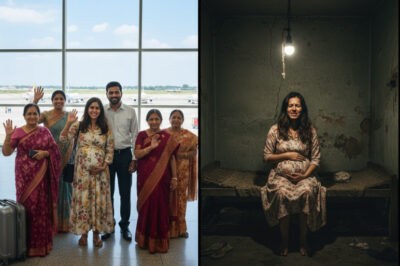💔“KEDARNATH NIGHTMARE: The 2013 Disaster That Swallowed a Holy Town — Untold Stories of Survival, Sacrifice, and Divine Terror”💔
What Really Happened That Night in the Shadow of the Temple? A True Account That Shook India to Its Core…
Byline: India Heritage Chronicles – Special Feature on the 2013 Kedarnath Calamity
INTRO: A NIGHT OF PILGRIMAGE TURNED INTO A NIGHTMARE
On the evening of June 16, 2013, the holy town of Kedarnath, nestled deep in the Himalayas of Uttarakhand, India, stood calm under heavy monsoon clouds. Thousands of pilgrims from across the country had gathered to pay homage at the ancient Kedarnath Temple, dedicated to Lord Shiva — unaware that within hours, this sacred land would become the epicenter of one of the deadliest natural disasters in Indian history.
What began as heavy rainfall soon turned into a deadly cocktail of flash floods, glacial bursts, and landslides — swallowing lives, tearing apart families, and leaving behind a trail of devastation, death, and unanswered questions.
This is the complete, true story of the Kedarnath tragedy… and the haunting memories of what happened that night.
PART 1: A HOLY PLACE CROWDED WITH FAITH
The Kedarnath temple, sitting at an altitude of 11,755 feet, has stood for over a thousand years — surviving earthquakes, invasions, and time itself. By mid-June 2013, the annual yatra was in full swing. Over 100,000 pilgrims had already passed through the narrow valley, and hundreds remained that evening despite worsening weather forecasts.
Warnings of heavy rain had been issued — but few expected what was to come.
“It rained for hours… then suddenly, the mountains roared,” said one survivor. “And everything changed.”
PART 2: THE NIGHT OF HORROR – JUNE 16, 2013
On the night of June 16, a cloudburst above the Chorabari glacier sent unimaginable volumes of water crashing down toward Kedarnath valley. Within minutes, the Mandakini River swelled beyond control.
At 6:40 PM, a massive landslide struck upstream. This blocked the river temporarily — creating a natural dam. Hours later, that dam broke violently, sending a wall of water, boulders, and debris directly toward Kedarnath.
But the worst was still to come.
At 2:45 AM on June 17, a second wave — believed to have been triggered by a sudden glacial lake burst — hit the town with devastating force.
“We woke up to screaming. People were running, buildings were falling, the river had turned into a monster,” said Deepak Rana, a porter who was rescued days later. “It was hell.”
PART 3: A CITY SUBMERGED, THOUSANDS MISSING
Entire buildings vanished in minutes. Hotels that once lined the main road were crushed or swept away. Bridges collapsed, and paths disappeared under mud, water, and corpses.
The Kedarnath temple miraculously remained intact — shielded by a massive boulder that redirected the deadly flow. But everything around it — the market, the lodging houses, the town’s infrastructure — was destroyed.
“It was as if Lord Shiva himself protected his abode,” said a priest who clung to temple steps for hours.
Over 5,700 people were declared dead or missing. Some bodies were never recovered — buried under mud or washed into the valley below.
PART 4: SURVIVORS’ STORIES — MIRACLES AND MADNESS
For three days, no rescue could reach the town. Survivors were left with no food, no water, no communication, and no idea whether help would come.
Many burned wood from temple doors to stay warm in the freezing rain. Others drank muddy water to survive. Parents carried dead children. Pilgrims clung to cliffs and trees for days, praying for helicopters.
“We buried our friends with our bare hands,” said Ramesh Pandey from Rajasthan. “There was no time to cry.”
When helicopters finally arrived, rescue efforts took 2 weeks, with Indian Army, Air Force, and disaster forces pulling off one of the largest peacetime evacuations ever.
But for many, it was too late.
PART 5: THE AFTERMATH — QUESTIONS, BLAME, AND PAIN
In the aftermath, many questions were raised.
Why were so many structures allowed near the riverbed?
Why were warnings ignored despite IMD alerts?
Was unchecked tourism and construction responsible for worsening the disaster?
Environmentalists had warned for years that Kedarnath’s ecosystem was fragile — but few listened. The rampant building of hotels, roads, and shops along riverbanks had created a dangerous trap.
“This wasn’t just a natural disaster,” said activist Vandana Sharma. “It was man-made.”
PART 6: A TEMPLE THAT STOOD STRONG, A NATION THAT MOURNED
Despite everything, Kedarnath temple stood unmoved — untouched except for mud deposits around it. A large boulder, now called “Baba Bholenath’s Rock,” was credited by many as having saved the shrine.
Today, a memorial stands behind the temple. The boulder is worshipped by pilgrims who believe it was divine intervention.
Rebuilding the region has taken years, but for survivors, scars remain eternal. Many still suffer from trauma, having lost loved ones with no remains to bury.
FINAL WORD:
The Kedarnath disaster of 2013 was not just a tragedy of lives lost — it was a wake-up call.
A reminder of how fragile nature’s balance is, and how swiftly sacred land can become a graveyard when warnings are ignored.
And yet, amidst the sorrow, the temple still stands — not just as a spiritual symbol, but as a monument of resilience, memory, and lessons written in blood and water.
🙏 May the souls lost that night rest in peace. May we never forget what happened at Kedarnath. 🙏
News
एक 82 साल की औरत एक पुराने घर में अकेली रहती है। उसके तीन बच्चे हैं: पति की जल्दी मौत के बाद उसने अकेले ही उन सबको पाला। लेकिन जब वे बूढ़े और कमज़ोर हो गए, तो तीनों बच्चों में… अपनी माँ की देखभाल की ज़िम्मेदारी आगे बढ़ाने की होड़ लग गई। फिर एक दिन…/hi
एक 82 साल की औरत एक पुराने घर में अकेली रहती है। उसके तीन बच्चे हैं: पति की जल्दी मौत…
बेचारे को अपने पिता को बचाने के लिए 200 मिलियन की ज़रूरत है — वह 70 साल की औरत से शादी करने के लिए राज़ी हो जाता है, 10 दिन बाद उसे एक भयानक राज़ का पता चलता है लेकिन तब तक बहुत देर हो चुकी होती है…/hi
गरीब आदमी को अपने पिता को बचाने के लिए 200 मिलियन चाहिए — 70 साल की औरत से शादी करने…
61 साल की उम्र में, मैंने अपने पहले प्यार से दोबारा शादी की: हमारी शादी की रात, जैसे ही मैंने उसकी ड्रेस उतारी, मैं यह देखकर हैरान और टूटा हुआ था…/hi
61 साल की उम्र में, मैंने अपने पहले प्यार से दोबारा शादी की: हमारी शादी की रात, जैसे ही मैंने…
अपनी प्रेमिका के बेटे के साथ गर्भवती होने का जश्न मनाने के लिए, पति ने पूरे परिवार को एक यात्रा पर आमंत्रित किया – अपनी पत्नी को प्रसव पीड़ा में घर पर अकेला छोड़ दिया… और फिर, सच्चाई से सभी हैरान रह गए।/hi
अपनी लवर की प्रेग्नेंसी को सेलिब्रेट करने के लिए, पति ने पूरे परिवार को एक ट्रिप पर बुलाया — अपनी…
मैंने अपने पति से अपने माता-पिता का कर्ज़ चुकाने के लिए 50,000 रुपये मांगे। उन्होंने तुरंत टेबल पटक दी और मुझ पर चिल्लाए कि “पैसे बर्बाद कर रही हो और प्रॉपर्टी खराब कर रही हो”, फिर मुझसे कहा कि जाकर खुद पैसे ढूंढकर वापस कर दो। उस रात, मैंने चुपके से अपने तकिये के नीचे हाथ डालकर सीक्रेट फंड निकाला – और जब मैंने उसे छुआ तो कांप गई…/hi
मैंने अपने पति से अपने माता-पिता का कर्ज़ चुकाने के लिए 50,000 रुपये मांगे, और उन्होंने तुरंत टेबल पटक दी…
मेरी पत्नी की बहन अचानक आधी रात को मेरे कमरे में घुस आई और जब मेरी पत्नी बाहर थी, तो उसने एक कन्फ्यूजिंग रिक्वेस्ट की।/hi
मेरी पत्नी की बहन अचानक आधी रात को मेरे कमरे में घुस आई और जब मेरी पत्नी बाहर थी, तो…
End of content
No more pages to load












